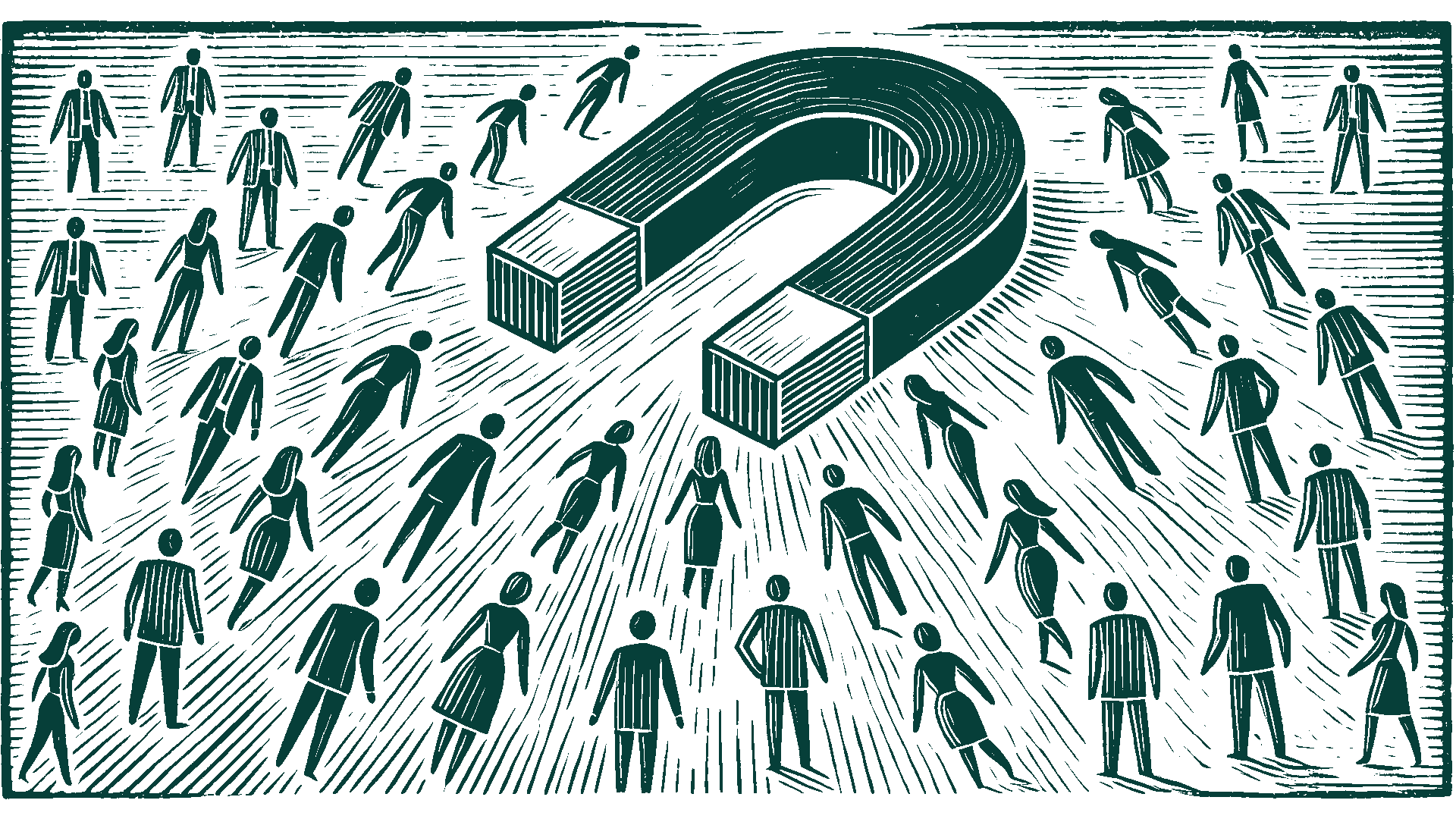A Blog with Tips & Tricks for Enlightened Presenters

How to Get People to Show Up at Your Presentations
Recently, when speaking with a franchised restaurant client, we were discussing one of the greatest chicken/egg issues in the business: traffic. It’s a pretty simple equation, really, but talk it long enough and it starts to look like the snake eating its tail. More so than average guest check, traffic drives restaurant sales. And as goes sales goes marketing budget. Marketing budget begets brand. And brand ultimately leads to more traffic. So in restaurants, traffic is king. Because anyone who shows up has at least the intention to eat, so that’s more than half the battle.
I couldn’t help but notice how similar this is to presentations.
Most of the time, convincing an audience to show up is more than half the battle. Anyone arriving at your presentation already has the aspiration to act on your information. Or at least the intention to listen. Their commitment to consume your content puts you in the driver’s seat, thus giving you license to serve.
So how do you get them there?
Let’s turn back to restaurants for inspiration. How does one build traffic, especially when the competition is so fierce, all vying for share of the same finite, hungry diners? How does an enlightened presenter create interest in his or her content when there are myriad other ways the audience could spend their time? Tearing a page out of a restaurant playbook, the below tactics should put us in the position to speak not to an empty room, but instead to a full house:
1. Give them a taste.
Sampling. It’s not just for Mark Ronson. Are there bite-sized morsels of your presentation that tease the audience and whet their palette enough to coax their attendance? How would you distribute them? The stage will dictate this. How will you know they’re motivating enough? Ask. Pluck 3 to 5 audience members and bounce ideas off them. Be direct: “Would you attend a presentation about [insert valuable takeaway]?” There are only two possible answers, and both of them tee you up for more valuable discussion.
2. Create exclusivity.
A fine-dining restaurant gets to charge more for the same ingredients, even though it turns customers away by creating reservations. Why should they have all the fun? Announcing that your presentation has only a limited number of seats, or is only available once, puts the audience in an “I can’t miss this!” state.
3. Make comparisons to other options.
There are “burger wars,” “pizza wars” and “burrito wars.” Why? Because restaurant marketers leverage the actions of one brand to bolster their own. And when brands compete, consumers win. Want to mimic this? Consider the other ways your audience could spend their time and paint a picture of how much more exciting your presentation will be. Are you competing with a 10:00 finance meeting? Don’t be timid. Tell your audience they won’t need their calculators at your session.
4. Stage a grand opening.
In restaurants, the grand opening sets the tone for the life of a location. If it happens without fanfare, or with bad reviews, it’s safe to place a bet on closure within a year. But if there’s a line around the building for the first couple weeks, it’ll be a staple in your neighborhood. The difference? The degree to which consumers are excited about “NEW.” Are there parts of your presentation that have never been heard? Tease them. Is there a special activity or interaction the room isn’t used to? Maybe there should be. Will there be a bounce house? (Please don’t set up a bounce house.)
5. Borrow equity.
There’s no other term for this, but trust me it’s not as shameless as it sounds. Imagine McDonald’s without Monopoly. Would that world-famous promotion be as successful? On its menu, Taco Bell touts Cinnabon, Starburst and Pepsi products, just to name a few. Who from your team – or outside it – could lend credibility to your message? What “celebrity” or “brand,” in the eyes of the audience, will create allure? If you have the stage, you have a right to tap into this tactic, so don’t be bashful. Are you up there talking about batteries? Then why wouldn’t you call Elon Musk?
These are only a handful of methods that, when employed correctly, can strike the right chord. For more ideas on how to improve presentation skills, and to think further through the opportunity at hand, don’t wait. Get in touch.